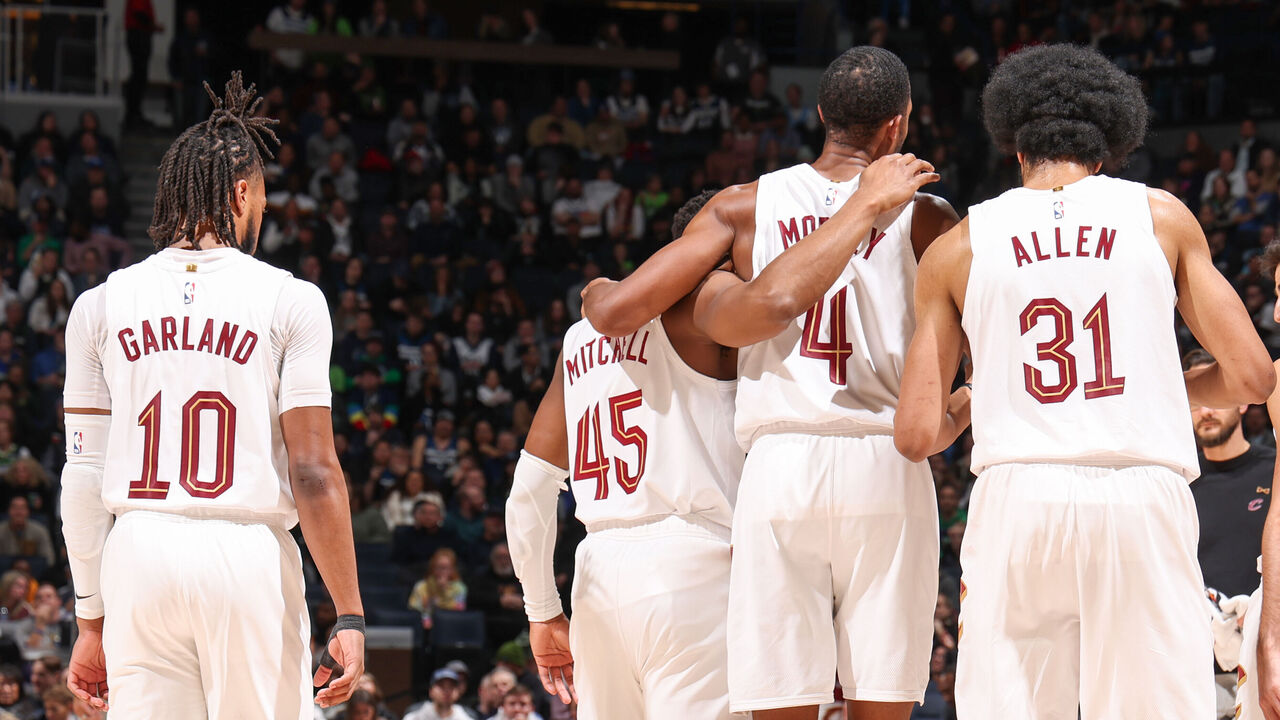Title Tiers, Part 2: Cases for and against the East's fringe contenders
Dynasties often rule the NBA, but we’re in an era of parity that’s produced five different champions and eight different finalists over the last five years. This coming season features another deep and diverse field of contenders. We’re laying out reasons to believe in them and reasons to doubt them.
Part 1 featured four inner-circle contenders. Next up, the fringe contenders of the Eastern Conference.
Cleveland Cavaliers
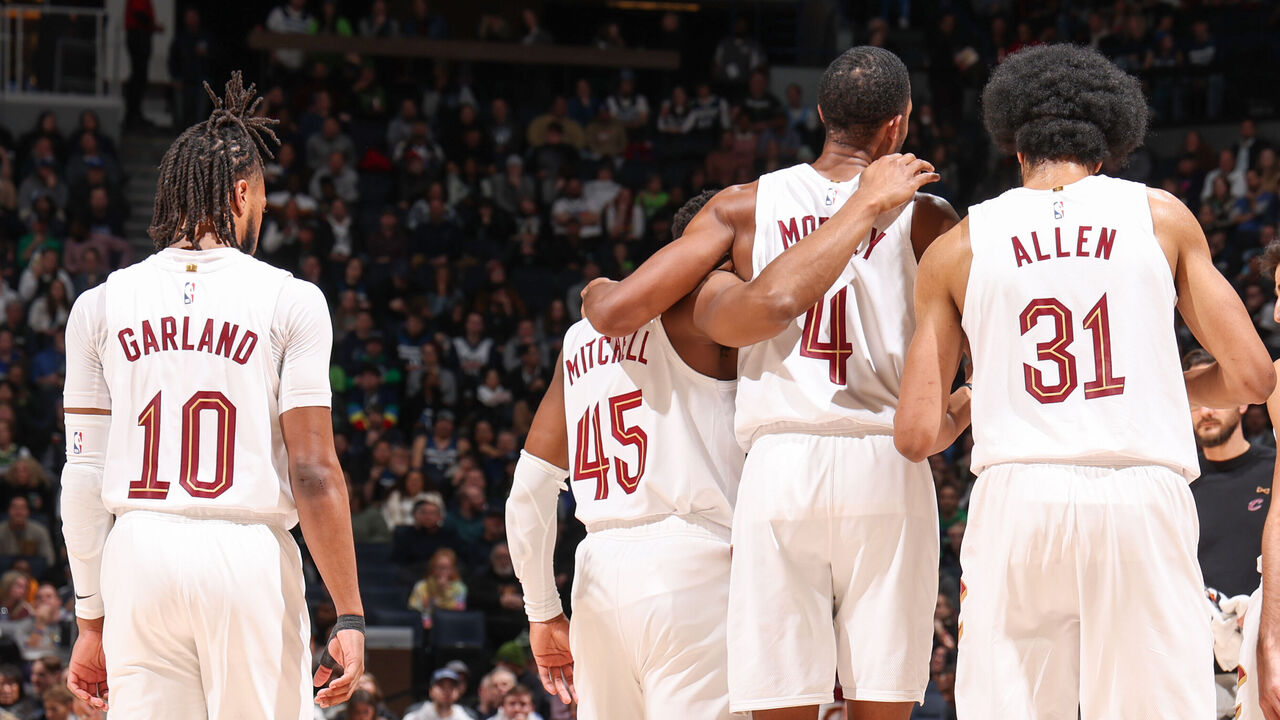
Reasons to believe: The Cavs are stocked with more young talent than any team in the East. Coming off a 51-win season in which they had the NBA’s second-best net rating, they look like the team best positioned to surge into championship contention on the strength of internal improvement alone.
At 23, Darius Garland is already one of the league’s best shooters and most creative passers. At 22, Evan Mobley is one of its best and most versatile defenders, having just finished as a Defensive Player of the Year finalist in his second season. Both have plenty of room to grow – Garland as an interior scorer and contact absorber, Mobley as a rebounder and playmaker – through physical maturation, skill development, and experience.
Donovan Mitchell brings hyper-efficient self-creation at enormous volume, and Jarrett Allen offers elite rim protection and lob-catching ability. And while those two may be closer to their ceilings than Garland and Mobley are, at 27 and 25 respectively, they’re as likely to improve as they are to regress. Isaac Okoro has come under scrutiny for his continued offensive shortcomings three seasons into his career, but he’s an ace defender who can make his presence felt on the wing or at the point of attack. He’s also made incremental strides as a standstill shooter, cutter, and at-rim finisher over the years. At just 22, he’s a long way from being a finished product.
The pieces fit together snugly, even if it feels like the puzzle isn’t quite complete. Pairing up Mitchell and Garland was supposed to kneecap Cleveland’s defense, but instead the team led the league in defensive rating in both the regular season and playoffs. That second bit might be surprising given how definitively the Cavs were dispatched by the Knicks in the first round, but that loss was an offensive failure, and this offseason, the front office took steps toward addressing the flaws that contributed to that failure.
Most importantly, they added a huge influx of shooting on the wing in the form of Max Strus and Georges Niang. A healthier Dean Wade, who was shooting the lights out before a shoulder sprain wrecked his season, should also be part of the solution. Mobley’s development, above, all, could completely change the offensive equation. That’s quite a bit of potential upward mobility for a team that was already very good.
Reasons to doubt: Everything was fine and dandy for Cleveland … until the bright lights of the postseason exposed all of its warts.
The biggest was a simple lack of two-way balance, with the Cavs having to scheme around their backcourt’s defensive vulnerabilities (which persisted despite great improvement and effort from both Mitchell and Garland) in conjunction with their frontcourt’s offensive limitations (neither Allen nor Mobley could create for themselves or make plays in space when it mattered). Without a strong wing corps capable of bridging and reinforcing those two wobbly entities, the structure collapsed. The players they signed to remedy that problem will be helpful, but they’re also primarily one-way players who top out at “passable” defensively.
Another area where Cleveland struggled last season was on the glass, despite starting two traditional big men. (That chicken came home to roost against the Knicks, who rebounded nearly 40% of their own misses in the five-game shellacking.) Part of that had to do with Allen and Mobley getting outmuscled and outmaneuvered on the boards, but for the most part, it was a team issue. Even an exceedingly tall frontcourt can’t totally cover for poor rebounding wings and guards, which is exactly what Cleveland has. Strus and Niang (the latter of whom has been one of the worst rebounding forwards in the league over the past few seasons) are unlikely to help in that regard.
On top of that, a ton of the offensive rebounds the Cavs surrendered were the result of shading extra defenders toward the ball (and thus being shorthanded on the back side) because they didn’t trust anyone other than Okoro to handle one-on-one assignments against top perimeter scorers. Okoro is still the only trustworthy perimeter defender in the regular rotation, and his offense is still likely to make it difficult to keep him on the floor in the playoffs.
The easiest way to cast doubt on the Cavs as a true-blue contender is to stack them up against the teams they’ll have to compete with in the Eastern Conference alone. Not only can the Bucks and Celtics trump Cleveland on top-end talent, but they also don’t face the same issues regarding two-way lineup equilibrium. Even teams like the Knicks and Heat arguably have fewer questions to answer about postseason viability than the Cavs do. This team, for all its talent, has a lot to prove. – Joe Wolfond
New York Knicks
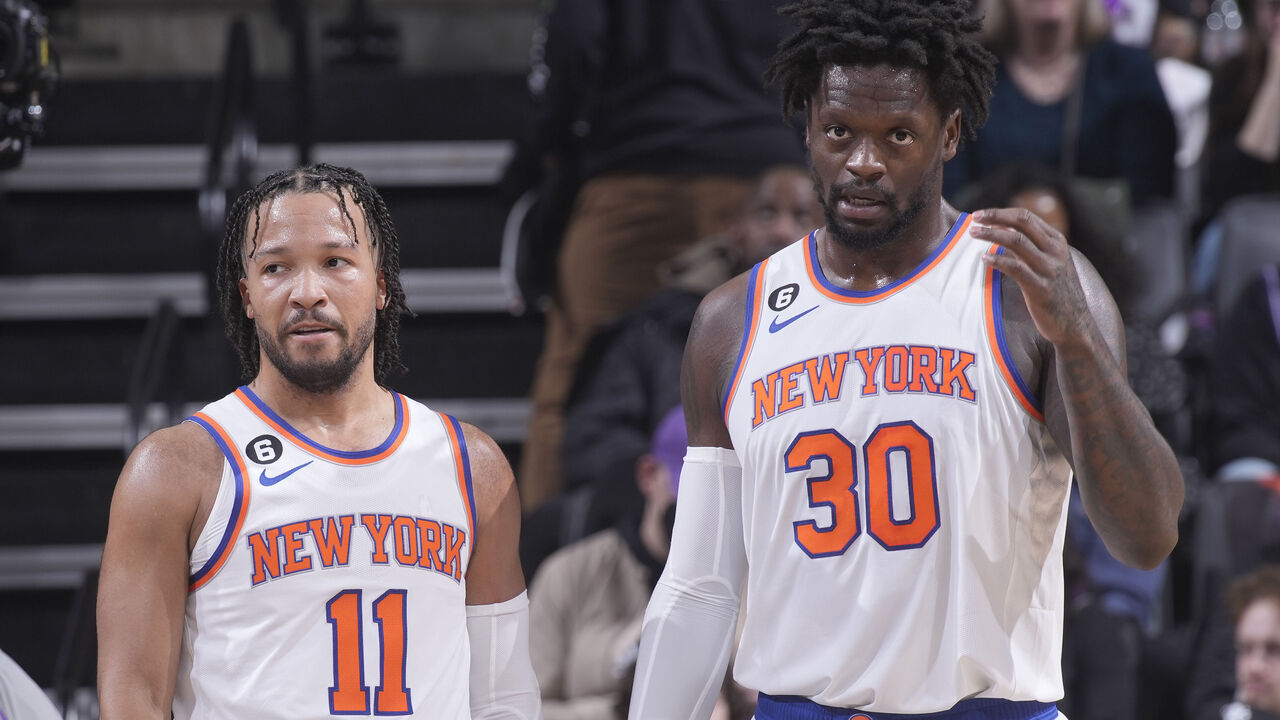
Reasons to believe: A team that won 47 games and advanced to the Eastern Conference semifinals last season brings back its top eight (playoff) rotation players while adding Donte DiVincenzo, a defensive-minded guard who shot nearly 40% from deep on more than five 3-point attempts per game last year.
The Knicks have a proven postseason star in Jalen Brunson and solid defensive infrastructure. The team also believes it has the assets required to trade for the type of talent capable of finally getting New York over the hump. Add it all up, and you have to at least acknowledge this team’s status as a fringe contender.
Reasons to doubt: We included the Knicks here out of respect for the team that eliminated Cleveland just six months ago, but while New York should be solid once again, competing for a title with this core seems like wishful thinking.
A path to legitimate contention seems fraught while the Knicks employ both Julius Randle and RJ Barrett. Randle has been an All-NBA forward twice in the last three years, and there’s something to be said for his consistent regular-season production and durability. But his effectiveness is tied too closely to some streaky jump shooting, and his defensive effort is far from playoff-proof.
Meanwhile, Barrett’s overall impact pales in comparison to his raw numbers. Though he’s become a solid enough defender, the Canadian’s efficiency has been woeful for such a high-usage player. Aside from a 40% shooting performance from long range in 2020-21, Barrett’s shooting percentages have never ranked higher than the 43rd percentile among wings from any area of the court, per Cleaning The Glass.
With Randle on the court and Barrett off last season, the Knicks won their minutes by a whopping 11.9 points per 100 possessions. With Barrett on and Randle off, they still outscored opponents by 1.5 points per 100 possessions. But New York comfortably lost the minutes both players shared the court (minus-2.3).
Having a player of Brunson’s caliber on a bargain contract (an average salary of $25.7 million over the next two years) would usually give teams a leg up in filling out a contender, but owing Randle and Barrett a combined $54 million per year over the next couple seasons negates that advantage.
As for that aforementioned trade capital, it’s grossly overrated. The Knicks own up to four extra first-rounders (giving them six total) over the next two drafts, and the protections on the picks keep them rolling over for another couple of years after that. But each of those extra picks is well-protected. Do a bunch of first-rounders that are most likely going to land in the teens – if not convert to second-rounders – really move the needle? The Knicks will get Milwaukee’s 2025 first-rounder if it falls between 5-30 (New Orleans gets it if it’s top four), but given that Giannis Antetokounmpo and Damian Lillard are both under contract through at least 2024-25, it’s destined to come in much closer to 30 than five.
Don’t get me wrong: a multitude of protected picks, some of New York’s solid (but unspectacular) youngsters, and perhaps even Barrett could help fetch a good player or two. However, the Knicks’ trade chips pale in comparison to that of teams like the Thunder, Spurs, Jazz, or Nets. If a star good enough to push this Knicks team over the top hits the trade market, New York’s offer is unlikely to be the best one. – Joseph Casciaro
Miami Heat
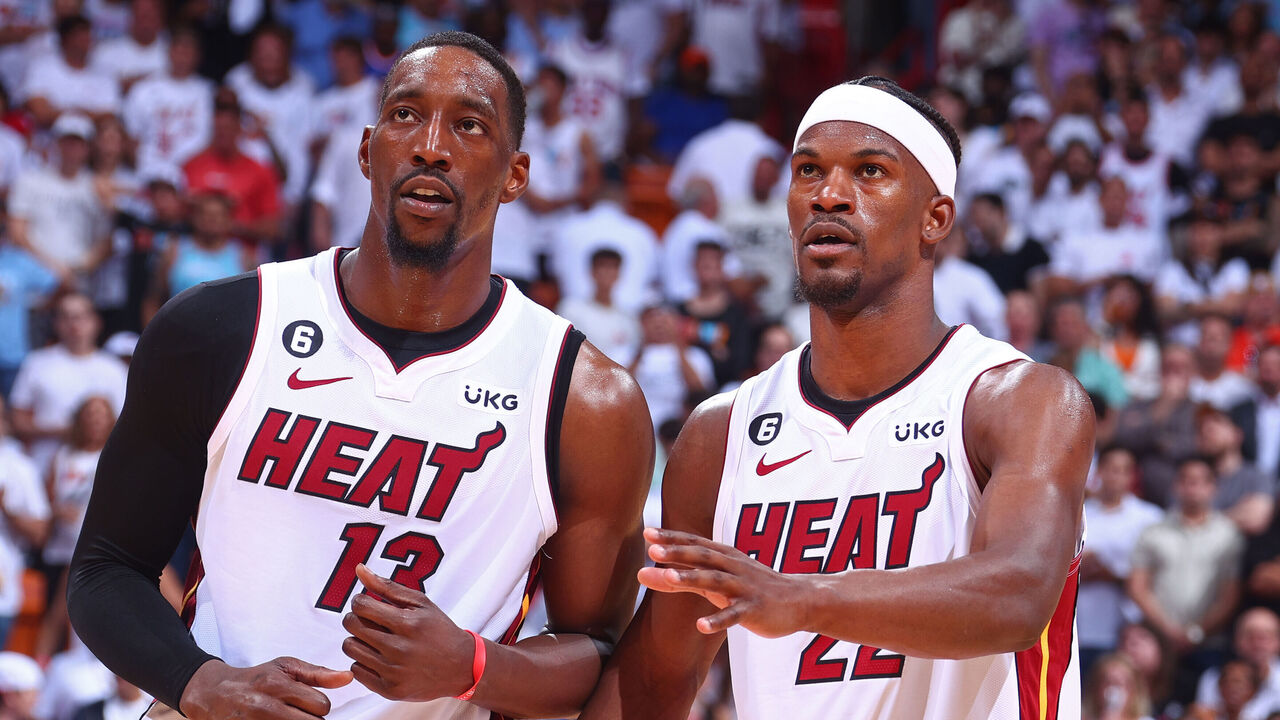
Reasons to believe: Well, that Dame Lillard pipe dream was fun while it lasted. Lillard would’ve been such a perfect fit with the Heat that he’d probably have made them the favorites to win the East. Now that he’s in Milwaukee, Miami can once again lean into the scrappy underdog identity that it has clearly relished ever since bringing in Jimmy Butler.
For all their structural flaws, the Heat still have the architecture in place that’s produced three conference finals appearances, two Finals berths, and more playoff series wins than any other team over the last four years: the brilliance and relentlessness of Butler, the extraordinary defensive versatility of Bam Adebayo, the tactical ingenuity of coach Erik Spoelstra, the creativity and scoring panache of Tyler Herro, the veteran savvy of a few old heads (in this case Kyle Lowry and Kevin Love), a seemingly inexhaustible cache of homegrown role players, and, of course, devil magic. Doubt this team at your own peril.
Miami’s had a top-10 defensive rating for eight years running, and there’s no reason to think that streak ends this season. With the shape-shifting Adebayo capable of anchoring any and all of Spoelstra’s wacky schemes, Butler applying ball pressure and wreaking havoc in the gaps, Lowry still able to make disruptive plays as a helper, Josh Richardson dodging screens at the point of attack, and all of those guys – plus rangy wings like Caleb Martin and Haywood Highsmith – capable of switching up or down the positional spectrum, the Heat should once again be the most unpredictable defense in the league. They’ll confound opponents with their sheer variety of coverages.
Offense will be a bit more of a challenge for them (as it always seems to be), but this team has a way of grinding through the muck and making things work. Spoelstra’s system, oriented around high-post handoffs and split action, uses off-ball creation to make up for one of the team’s big weaknesses: a dearth of on-ball creators capable of breaking defenses down. When that isn’t effective and the Heat just need someone to create something from nothing, Butler and Herro are usually up for the task. Adebayo doesn’t do it consistently, but he’s capable of creating for himself in a pinch, too.
Though the Heat may feel the impact of losing backcourt pieces Max Strus and Gabe Vincent, they can hope to make up for it by having a healthy Herro for the playoffs. On top of that, they appear to have more frontcourt depth than they’ve had in the recent past, with sophomore Nikola Jovic and rookie Jaime Jaquez Jr. looking ready to contribute, Highsmith proving last postseason that he could hang in high leverage, and veteran bigs like Love and Thomas Bryant supplying much-needed offensive competence behind Adebayo.
There’s less shooting here than is ideal, but having multiple floor-spacers capable of slotting in at power forward (Martin, Love, possibly Jovic) should prevent things from getting too congested. Plus, this being Miami, some undrafted castoff (Cole Swider? Jamal Cain?) will surely emerge as an indispensable sharpshooter, just as Strus, Vincent, and Duncan Robinson did.
Point out this team’s limitations all you want; just know that, in the end, they may not matter.
Reasons to doubt: OK, but seriously, the Heat have some major limitations that by any logical reasoning should prevent them from repeating or even threatening to repeat last year’s Finals run. Miami was the lowest seed to win its conference in 24 years and won two series on the strength of unsustainably hot 3-point shooting. Now two of its playoff starters are out the door, Butler (34) is a year older, Lowry (37) is that much closer to the end of the road, and the team’s two biggest challengers in the East have loaded up.
It’s easy to forget, but the Heat were outscored during the regular season and then very nearly got knocked out of the play-in round. Before their team-wide postseason heater, they ranked 25th in offensive efficiency and 27th in 3-point percentage. Then they lost Strus and Vincent – who collectively hoisted 12 threes a game – without adding comparable replacements. When your two best players are non-spacers, as Butler and Adebayo are, it’s vital to have high-volume movement shooting threats around them. Herro and Robinson provide that but, as always, Miami has to weigh the importance of their gravity against the damaging effects of their defense.
Spoelstra is a magician, but given the quality of competition at the top of the conference, it’s hard to imagine this team keeping pace when so many players in its rotation are clear minuses at one end of the floor or the other. Eventually, the magic has to run out. Doesn’t it? – Wolfond
Philadelphia 76ers
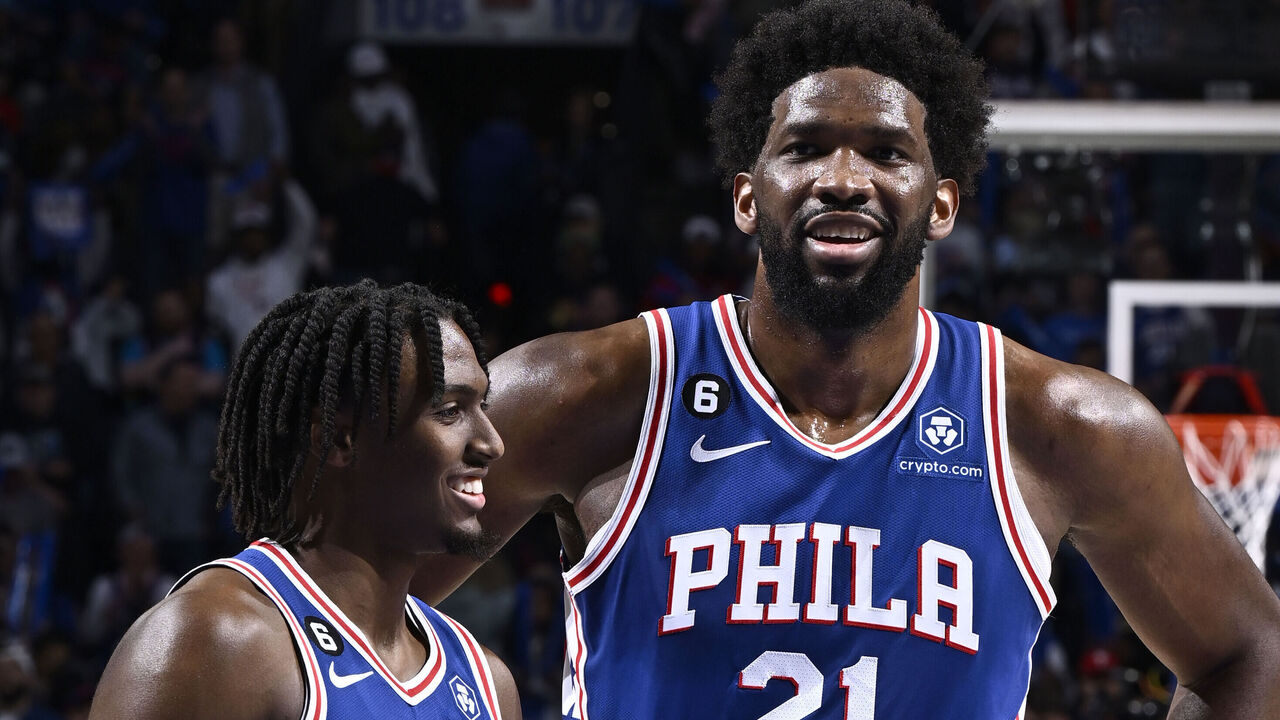
Reasons to believe: The Sixers have the reigning MVP in Joel Embiid and a youngster on the brink of legitimate stardom in Tyrese Maxey, an explosive guard whose skill set meshes perfectly with Philadelphia’s do-it-all big man. Those two players alone give the Sixers the offensive foundation of a contender, and Embiid practically serves as a top-10 defense unto himself.
Though his ability to rise to the occasion in bigger moments has been questioned over the years, Tobias Harris also gives Philly a consistent, efficient, and durable tertiary scorer. Throw in the 3-and-D balance brought by depth pieces like De’Anthony Melton, P.J. Tucker, Patrick Beverley, Danny Green, Kelly Oubre Jr., and Paul Reed, plus whatever team president Daryl Morey can turn James Harden into on the trade market, and there should be enough here to give Embiid a chance to compete for his first championship (provided he can finally stay healthy in the spring).
In new head coach Nick Nurse, the Sixers also have a tactician who nails the fine details and in-game/in-series adjustments that can make a difference when the margins between winning and losing narrow in the playoffs. If things break right and the latest Harden drama doesn’t engulf them, you could argue that Philly has more upside than any team outside of the Nuggets/Bucks/Celtics/Suns tier.
Reasons to doubt: When do things ever break right for the Sixers – or rather, when are they not engulfed in drama?
Either Philadelphia is getting a disgruntled Harden on the court this season, or it’s getting pennies on the dollar in a trade return for the former MVP and reigning assist champion. That won’t do much, if anything, to boost the title odds of a team that hasn’t even made the conference finals in 22 years. In addition, as awesome as Embiid and Maxey should be this season, the 76ers would still need to overachieve and get some breaks to top Milwaukee and Boston.
Meanwhile, although Nurse’s postseason acumen speaks for itself, the 2019 champion and 2020 Coach of the Year has lost some shine over the last few years. His ultra-aggressive defensive principles and penchant for giving his top players heavy minutes wear on teams, and that approach could undercut the Sixers before they even get to the postseason. Embiid already has issues staying healthy into the playoffs and beyond. And even when he does, the big man has left a lot to be desired when Philly has needed him most in April and May.
Finally, it’s quite possible Embiid will tire of old nemesis Nurse quickly if this season goes off the rails at any point. – Casciaro

